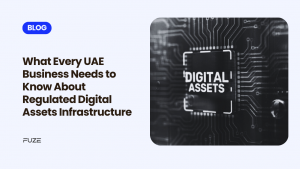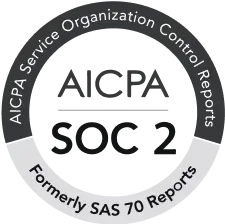Over the last two to three years, cryptocurrency staking has increasingly gained popularity for helping investors earn some form of passive income while maintaining the security and functionality of the blockchain networks. By locking up their cryptocurrencies, participants can earn rewards in the form of more crypto tokens. Staking has become a key component of the proof-of-stake (PoS) consensus mechanism, which is used by several prominent blockchain networks, including Ethereum, Cardano, and Solana.
As the cryptocurrency space continues to evolve, so will the world of staking. In this blog, we’ll explore the key trends to watch in 2025 and how these changes could shape the future of crypto staking for both retail and institutional investors.
What is Crypto Staking?
Before diving into the trends to expect in 2025, it’s important to understand what staking is. Staking is the process of locking up a certain amount of cryptocurrency in a wallet to help secure and validate transactions on a blockchain network. In return, stakers are rewarded with newly minted coins or tokens, which can be sold, held, or reinvested.
Staking is often seen as an alternative to mining in proof-of-work systems like Bitcoin, where miners utilize computational power to validate transactions. Proof-of-Stake (PoS) systems are viewed as more energy efficient because they depend on staked coins rather than computational work.
Trends to Watch in 2025
- Expansion of Proof-of-Stake Networks
When blockchain technology is fully developed, there is bound to be a large number of blockchain networks that would adopt the PoS consensus model. Ethereum, the second-largest cryptocurrency in market capitalization, already switched over to PoS with its Ethereum 2.0 update late in 2022. A large number of projects will join the bandwagon, shifting from PoW to PoS for improving scalability, cutting down on energy consumption and eventually lowering transaction costs.
In 2025, we can expect to see a larger variety of blockchain networks adopt PoS or hybrid models, thereby allowing more cryptocurrencies to be staked. This growth will open up more opportunities for staking and allow investors to participate in multiple ecosystems for rewards.
- Institutional Adoption of Crypto Staking
In 2025, crypto staking will see a rise in institutional participation. With more financial institutions, hedge funds, and asset managers pouring money into the crypto market, they will seek staking as a means of reaping yield on their crypto. Institutional investors already show deep interest in blockchain technology; thus, staking offers them a means to maximize the returns they make on their digital assets.
For institutions, staking offers a more secure, stable, and predictable income stream compared to traditional investment vehicles, especially in the low-interest-rate environment. As staking services are further customized to meet institutional needs, such as better liquidity options, regulatory clarity, and higher yields, more institutions will include staking in their investment strategies.
- Staking-as-a-Service Platforms
The emergence of staking-as-a-service (SaaS) platforms will continue to be a key trend in 2025. It refers to SaaS that helps investors stake their cryptocurrency without any need for technical know-how or even infrastructure to run and manage validators. These make staking simpler to implement by having access for larger players who lack technical capabilities for validator operations.
These platforms will also offer additional services like automatic staking, portfolio management, and advanced security features that make it easier for individuals and institutions to participate in staking without managing the complexities themselves. The growth of SaaS platforms will help democratize crypto staking, increasing its adoption across different investor segments.
- Staking Pools and Delegated Proof of Stake (DPoS)
Staking pools and DPoS systems are becoming increasingly popular, especially among smaller retail investors who may not have the capital to stake large amounts of crypto themselves. Staking pools allow individuals to combine their resources and stake together, earning rewards proportional to their contributions. This makes staking more accessible to a broader range of participants.
Another popular model is DPoS, where token holders vote on delegates or “validators” who then participate in the block validation process on behalf of those voters. This basically reduces the need for each user participating within the network to set up his own node.
By 2025, we will witness a higher number of staking pools and a lot more DPoS systems setting up, with better rewards, lower fees, and entry points being easier for smaller investors looking to invest in staking.
- Security and Regulatory Focus
Mainly, as staking becomes a mainstream phenomenon, its security and regulation will be major areas of focus. The investors will be looking for more effective security measures, like insurance for the staked assets and protection against slashing (penalties imposed on validators for bad behavior). Regulatory clarity will also become important as governments all over the world start to outline clearer frameworks for digital assets and services related to staking.
By 2025, we will have more regulated staking platforms and custodial services, which will be at par with institutional and retail investor standards. Regulations will safeguard investors, promote compliance, and increase transparency in the process, hence building confidence in the long-term sustainability of crypto staking.
- Increased Yield Opportunities
In 2025, staking rewards are likely to evolve and offer more attractive yield opportunities. As blockchain networks mature and competition between staking providers increases, there will be more incentives for stakers. Network upgrades, validator competition, and innovative staking models can drive higher staking yields.
In addition, staking services can provide “dynamic” yields that are based on network demand and performance. This way, stakers can earn more rewards when there is more blockchain activity. This can be a good option for both retail and institutional investors to maximize their returns from staking.
- Cross-Chain Staking
Cross-chain staking will become a reality by 2025 due to the growth of multi-chain ecosystems and interoperability solutions. This will allow users to stake assets across multiple blockchain networks, diversifying portfolios and giving access to different staking opportunities. This trend will make staking more versatile and give stakers the chance to earn rewards from a variety of ecosystems without having to manage multiple wallets or platforms.
Cross-chain protocols will probably facilitate this process, ensuring that staked assets are secure and can seamlessly flow between different blockchain networks. This feature will benefit investors who want to diversify their staking activities and participate in various projects across the crypto space.
- Integration with DeFi and Yield Farming
Staking and decentralized finance (DeFi) will continue to merge, offering new opportunities for stakers to earn rewards. In 2025, we can expect staking to be more closely integrated with yield farming protocols, where users can stake their assets and simultaneously earn rewards through liquidity provision or lending activities.
DeFi platforms could offer enhanced staking rewards by combining staking with other forms of decentralized finance, such as lending, borrowing, and liquidity pooling. This could unlock a new level of earning potential for crypto stakers and further blur the lines between traditional staking and DeFi opportunities.
- Staking for NFTs and Metaverse Projects
The rise of NFTs and the Metaverse will significantly impact the landscape of staking by 2025. New projects and platforms in these areas may offer unique staking opportunities where users can stake NFTs or metaverse-related tokens to reap rewards. In this regard, new incentives would be created, especially for the people who invest in the new worlds of virtual assets and digital collectibles.
For example, staking could become an integral part of play-to-earn (P2E) games, allowing players to stake in-game tokens to earn additional rewards or gain access to exclusive items. Similarly, staking could help secure the Metaverse by incentivizing users to hold and stake virtual assets tied to virtual worlds and digital identities.
- Environmental Sustainability and Eco-Friendly Staking
As environmental concerns continue to escalate, sustainability-centric staking models will be on the rise. By 2025, eco-friendly staking platforms may spring up, prioritizing projects that are energy-efficient through consensus mechanisms or offset carbon emissions generated by blockchain activities.
Stakeholders can also have the ability to select a platform that supports their cause and to select projects that are ecologically friendly or work towards the reduction of the carbon footprint in their blockchain networks. Sustainable crypto staking will become a priority for both institutional and retail investors who are looking to invest in ways that align with broader societal goals.
Conclusion
The future of crypto staking is bright, and 2025 will see significant advancements that will reshape how staking is viewed by both retail and institutional investors. From the expansion of PoS networks to enhanced yield opportunities, staking is set to become a more integral part of the crypto ecosystem.
As new trends like cross-chain staking, DeFi integration, and eco-friendly options emerge, crypto staking will continue to evolve, providing innovative ways for investors to earn passive income and support blockchain networks. With the right security, regulatory compliance, and continued development, staking will become even more accessible, transparent, and attractive to a growing global audience.
For investors looking to participate, keeping abreast of the latest trends in staking will be essential to navigating this space and maximizing rewards in 2025 and beyond.
Disclaimer: Virtual assets carry significant risks, including high volatility and potential loss of your entire investment. They are not backed by governmental protections, and recourse may be limited in case of loss. Always assess your risk tolerance, fully understand the risks, and seek independent financial advice if needed before investing.
Frequently Asked Questions
1. Will staking rewards increase in the future?
Yes, as the competition between networks grows and blockchain ecosystems mature, we can expect better yield opportunities for stakers. Some platforms may offer dynamic rewards based on market activity and staking demand.
2. How will DeFi and staking intersect in 2025?
In the future, staking and decentralized finance (DeFi) will likely merge. Stakers may earn higher yields by participating in liquidity pools or other DeFi protocols, creating new income streams through a combination of staking and lending or borrowing.
3. What is the impact of security on staking in 2025?
Security will become a major focus as staking gains traction. Investors will demand more secure platforms, including insurance for staked assets and protections against potential risks like slashing (penalties for validators).
4. How can eco-friendly staking benefit the crypto community?
Sustainability will be a priority for crypto staking, with more platforms focusing on energy-efficient blockchain networks. Investors may have the option to choose eco-friendly projects that align with environmental goals, promoting sustainability within the crypto ecosystem.
5. What’s the future of staking with NFTs and the Metaverse?
By 2025, staking could extend to NFTs and metaverse-related projects, allowing users to stake digital assets tied to virtual worlds. This can create new avenues for earning rewards and participation in emerging markets like gaming and virtual real estate.







